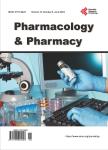The Place of Community Rescue Naloxone in a Public Health Crisis of Opioid Overdose
The Place of Community Rescue Naloxone in a Public Health Crisis of Opioid Overdose作者机构:NEMA Research Naples FL USA Neumentum Palo Alto CA USA LeQ Medical Angleton TX USA University of Arizona College of Pharmacy Tucson AZ USA Temple University School of Pharmacy Philadelphia PA USA
出 版 物:《Pharmacology & Pharmacy》 (药理与制药(英文))
年 卷 期:2019年第10卷第2期
页 面:61-81页
学科分类:1002[医学-临床医学] 100214[医学-肿瘤学] 10[医学]
主 题:Opioid Crisis Opioid Abuse Opioid Antagonist Community Naloxone
摘 要:The recent large increase in deaths involving opioids (whether prescription or illicit, pure or adulterated, alone or in combination with other drugs) is the manifestation of a complex, and multifaceted problem consisting of psychological, psychosocial, medical, legal, regulatory, economic, cultural, and political components, among others. Because the problem involves issues related to both supply and demand, the solution is not obvious, simple, or quick. There is no easy fix. Preventing and treating opioid misuse and abuse requires a comprehensive, time-intensive, and expensive intervention supported by public policy and support through coordinated medical, regulatory, legal, and financial guidelines and practice. But until the long-term problems can be fixed, the immediate crisis of overdose deaths can be ameliorated by making available an opioid receptor antagonist to reverse the respiratory depression that is the cause of death to those who are in the best position to administer it in time (professionals, untrained bystanders, and even fellow drug abusers). The statistics overwhelmingly demonstrate that this is a life-saving medical intervention. Yet, there is still uncertainty about this intervention, and even some opposition to it. We describe the scientific basis for the approach and the issues surrounding its use to treat accidental or intentional overdose by pain patients, recreational opioid users, and addicts. We also describe the calls to limit the number of times it should be available to a user and the limitations of its effectiveness—mainly that it only addresses the acute death crisis, not the underlying problems that led to it.



